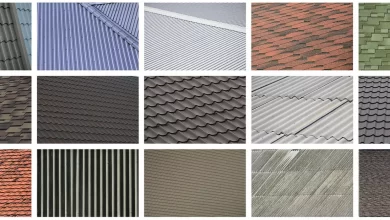
Since not all properties are the same, it stands to reason that not all drainage systems are equal. That said, it can be quite challenging to find the most effective system if you’re not entirely sure what you should be looking for.
The simplest starting point to installing a drainage system on your property is a consultation with a certified drainage plumber. It’s also necessary to understand the criteria they’ll be considering as having some insight will help you identify the best option and understand the experts’ advice.
Important Factors to Consider
To be clear, selecting the right drainage for your property is important to ensure the free flow of water and prevent potential flooding. Effective drainage also means soil remains properly aerated and inhibits runoff. Let’s delve into the top factors to consider.
1. Determine the Size of the Potential Installation Area
One of the biggest factors to consider is the area the drainage system must cover. Larger areas with adequate natural drainage mean you might not need a very intensive system. Where there is a considerable amount of natural drainage, your plumber will most likely recommend a system with reduced capacity.
If your property has very little or no existing natural drainage, there’s an increased risk of water pooling or flooding. This type of setup will require a more comprehensive drainage system. Planning this with your plumber in advance will allow you to budget more accurately.
2. Compare Costs Without Being Frugal
When it comes to plumbing, most homeowners want the cheapest option possible. In most cases, that will get the job done. However, it only takes one major storm for water to create havoc all over your property and even surrounding areas. So, when it comes to the drainage system on your property, you should strongly consider finding a good balance between price and quality.
Your plumber will provide you with various options and be upfront about the budget you’ll need. In the long run, it might be safer and more economical to invest in the right system from the get-go. Repairing or improving it later on may be very costly.
3. Consider the Area Where You Live
Some drainage systems are better than others. It’s important to consider the area you live in and the existing infrastructure. Ask the plumber these crucial questions:
- How will the surrounding environment affect the system and installation?
- Will the pipes used in the system be durable enough to be both effective and long-lasting?
- Where will the water run off and how will this affect a potential flood? This is important as you don’t want water to flow back or pool. Stagnant water can cause several health and environmental issues.
- Would any future developments affect the existing infrastructure and what provisions should be made for it?
- What are the local regulations your water drainage system design and placement needs to adhere to?
4. Research the Weather and Climate
Everyone knows the Australian weather can be damaging to pipes, fixtures and other plumbing fittings. Harsher weather conditions require stronger pipe materials to ensure durability. Speak to the plumber Keilor residents rely on for all their drainage needs and obtain the most durable options.
To make wise decisions, other weather factors to consider include the following:
- Rainfall: Research factors such as annual rainfall levels and frequency as well as flood history in the surrounding areas.
- Soil: Incorrectly installing a drainage system in the soil around your property will cause major damage every time it rains. Ineffective drainage can also create mudslides. Check the soil type and how a system installation will affect it. An effective drainage system should work well in all conditions, even during excessive rain.
- Debris: In areas surrounded by a lot of foliage and vegetation, severe weather can result in leaves and other plant materials blocking drains and pipes. In this instance, you want to speak to your plumber about gratings and leave baskets to minimise blockages.
5. Drain Location
No one wants an unsightly drain in a prominent place. Your plumber will assess the layout of the area and consider factors such as road crossings as well as the location of the main water drainage system. To pick a location, it’s also important to consider the following:
- Maximum height and slope of grassed batters
- Potential access to vehicles
- Inlet locations
- Width of any streets or walkways that cross with the system or run through your property
6. Consider Surrounding Obstructions
When you’re designing the water drainage system for your property, it’s crucial to consider obstructions that may hamper your plan. Some of the underground obstructions to take into account include:
- Sewer mains
- Communication cables
- Gas mains
- Oil pipelines
- Traffic signal cables
- Existing water mains
- Council drains
Top Tips To Purchase The Right Legging For Women
Final Thought
Opting for the best quality pipes and assessing the area your property is on, will go a long way to minimisng any future flooding risk! And luckily, installing an effective water drainage system doesn’t have to be complex. Enlisting the services of a drainage plumber will remove most of the burden from your shoulders.




